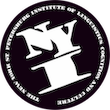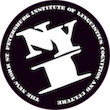
Seminar: Ling C: Mechanisms in language acquisition and change
The relation between language acquisition and language change has long been recognized (Lightfoot, 1979; Paul, 1880). Languages undergo change in speech communities whose linguistic compositions are constantly in flux over time. In parallel, child language acquisition is dynamic – individuals’ internal languages develop as they mature from pre-verbal infants to adult speakers. Children’s status as innovators in language is evident from the fact that they sometimes produce forms that are not attested in the input. A famous example is the case of children’s over-regularization of the English past tense, whereby children extend the regular past tense ending –edto irregular verbs, such as *goed instead of went (Marcus et al., 1992). While these forms have sometimes been perceived as “errors”, they in fact bear important testimony to children’sability to tease apart generalizations from idiosyncrasies in language acquisition. A parallel trend is frequently observed in language change, whereby regular forms replace irregular ones, as in the case of the past tense form of the verb rowin English that used to be rewbut is now rowed (Ringe & Yang, 2022). A central question in language acquisition research is whether the child discovers linguistic regularities based on the input or whether such regularities form part of the language design (see Newport, 2020 for an overview)? The same theoretical tension arises in historical linguistics: Is language change constrained by mechanisms inherent to language or not? In this seminar we will look at some classic questions in historical linguistics and language acquisition through the lens of cross-linguistic studies.

